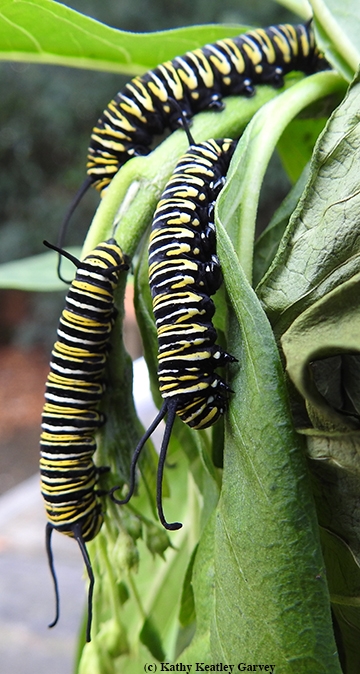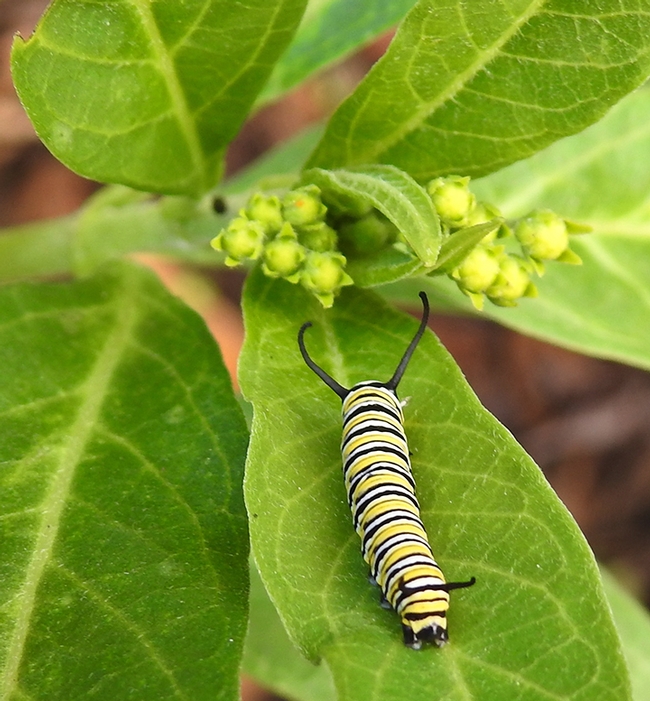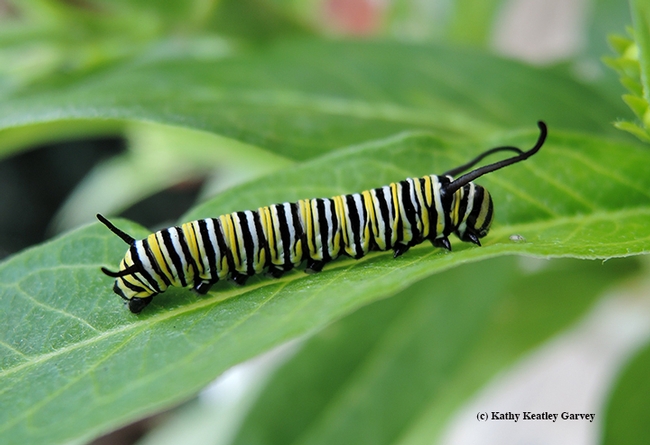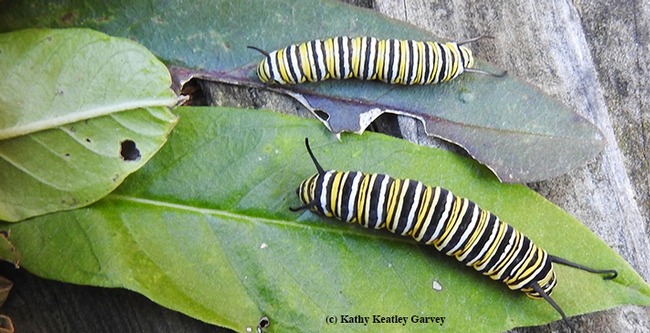
No, the stuffed turkey didn't slip out of the oven and fall on the floor. Nor did the pumpkin pie turn another shade of orange.
Some unexpected guests arrived--four to be exact.
That's the number of monarch caterpillars we found on our tropical milkweed (Asclepia curassavida) in our pollinator garden in Vacaville, Calif.
Between Nov. 15 and Nov. 24, we've discovered 12 caterpillars on our tropical milkweed, a non-native perennial. (Three other species of milkweed, Asclepias tuberosa, Asclepias speciosa, and Asclepias fascicularis, also thrive in our pollinator garden.)
Just when we thought our small-scale conservation project of rearing and releasing monarchs is all over 'til next year, it's not. Our season total of 54 monarchs is likely to increase.
"This is really far inland for such late breeding," said butterfly expert Art Shapiro, distinguished professor of evolution and ecology who has been studying Central California butterflies for more than four decades and maintains a website on his work and monitoring observations. "Winter breeding has been occurring near the coast for some years now, but I recall no records this late east of the East Bay. October, yes. November? We really need to understand the physiology and genetics of non-repro-diapausing winter monarchs!"
"We've been seeing evidence of a significant fall window of opportunity for larval monarch development for a few years now, which seems different than the historical pattern," noted Louie Yang, associate professor of entomology, UC Davis Department of Entomology and Nematology. "I've wondered if these are returning migrants that are breaking reproductive diapause when they encounter warm conditions in the Valley. I've mostly seen them on late season native milkweeds, but of course the tropical milkweeds are even more persistent."
Meanwhile, the 12 monarchs are the center of attention--well, at least a corner of attention--on our kitchen counter. Our setup: two mesh, zippered containers from the Bohart Museum of Entomology, UC Davis; and four narrow-necked, flat-bottomed bottles filled with water and milkweed stems.
The monarch caterpillars are doing what monarch caterpillars do best--and what folks around the Thanksgiving dinner table do best. Eat.
Attached Images:

A November monarch caterpillar found on tropical milkweed in Vacaville, Calif. (Photo by Kathy Keatley Garvey)

Close-up of a November monarch caterpillar. (Photo by Kathy Keatley Garvey)

The two monarch caterpillars discovered on Thanksgiving Day on separate tropical milkweed plants in Vacaville, Calif. (Photo by Kathy Keatley Garvey)